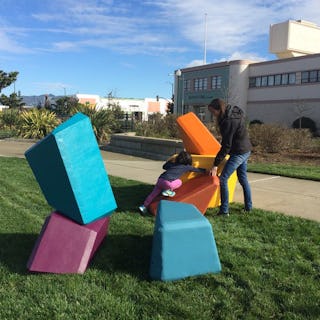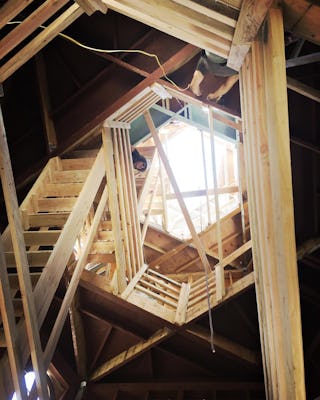Creative and Critical Making
Oct 01, 2018


I recently formed a sort of hypothesis, or supposition if you will, instigated by the opening question in Leslie Hirst's "Groundwork", "How does a new student of art and design transform into creative and critical maker"?
I jotted down this initial thought with consideration that I was about to break it completely apart as I completed the reading. That supposition started as this:
Along a similar philosophy as Joseph Beuys who argued that everyone is an artist, in some form or another, I believe that everyone is a maker. However, to be creative and critical requires embracing or actively questioning your chosen expressive language as it pertains to intention/choice; empowerment/permission; iteration/uncertainty/experimentation.
And then, what is creativity?
Leslie Hirst's description really brings to the forefront what I, through the lens of an experienced designer, also hold as true. Creativity is not always new or novel. Creativity can involve innovation. Creativity does not mean "original" for inherently is there is, even in the break down of the work original, an *origin* we must acknowledge. Indeed, creativity applies to many walks of life, modes of thinking and doing, yet complies with similar measures of success across the board.
Did you do it? Yes? Ok, success in doing.
Hirst's outline of what it takes to be a creative and critical maker, as five key lessons, are introduced with the acknowledgment that the discipline of art and design disciplines, is that they are, contrary to conventional thought, very rule-based. Side note: I wish she would have gone further to describe how to distinguish between art and design instead of casually use them in the same sentence all the time.
The rule-based standards include, according to Hirst, needing step-by-step frameworks, structured guidelines, applications, and—the best rule of all—the necessity to break these aforementioned rules.
I would agree that these particularly process-driven disciplines are rare in that we are expected to break the rules by following them.
I comment on Hirst's five lessons below:
"Lesson #1 - Begin by looking at options" as opposed to "acting at random" - Yes, and make sure these "options" are varied, diverse, and across disciplines.
"Lesson #2 - Learn to see by thinking more complexly about visibility." - While Hirst's examples of playing with scale are helpful is testing our boundaries, assumptions, and understanding of what is visible, I strongly believe that art and design needs to go beyond visibility. It's time to acknowledge that there are many other senses to tap into and use as muse or medium for instigating multi-sensory that invites those visually disabled, creative problem solving or designing of experiences. Refer back to #1 for making sure there are diverse options to inspire what's possible and what may be considered.
"Lesson #3 - Use everything you know and record everything." - Yes, everything. To distinguish between "everything" vs "anything" is important. Hirst could have said "anything". But then there is no personal experience or relevance to point to, connect to, or find ways to translate. Some of that everything will fall by the wayside as one experiments or iterates, but some of that everything will continue to show up.
"Lesson #4 - Don't try to get to the end without taking necessary steps to get there." Word. Might at add this means no attachment, keep goals as just guides that you may reference but not necessarily follow as being some syntax or absolute direction.
"Lesson #5 - Understand that what you are learning is not hat is being taught". What you are being taught is how to learn from yourself.
If I could add an additional lesson, Lesson #6 might be:
Explode your assumptions of the following and ask questions: Assumptions of what you believe art and/or design to be.
What "finished" means and the value of iteration for years to come.
And my earlier supposition? Yeah, everyone may be artists or makers in one way or another. But acting with intention and rigor to ask questions, test them out, iterate, fail, and make again with desire to do more… there lies the proof of a creative and critical maker in the making.